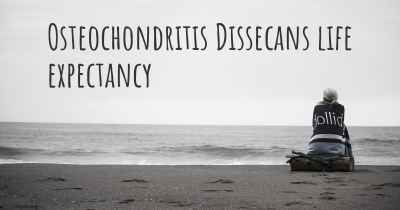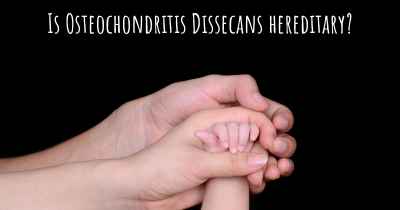Living with Osteochondritis Dissecans. How to live with Osteochondritis Dissecans?
Can you be happy living with Osteochondritis Dissecans? What do you have to do to be happy with Osteochondritis Dissecans? Living with Osteochondritis Dissecans can be difficult, but you have to fight to try to be happy. Have a look at things that other people have done to be happy with Osteochondritis Dissecans

Living with Osteochondritis Dissecans
Osteochondritis Dissecans (OCD) is a condition that affects the joints, particularly the knee, ankle, and elbow. It occurs when a small piece of bone and cartilage separates from the joint surface, causing pain, swelling, and limited mobility. Living with OCD can be challenging, but with proper management and lifestyle adjustments, you can lead a fulfilling life. Here are some tips to help you navigate life with OCD:
1. Seek Medical Advice
If you suspect you have OCD or have been diagnosed with it, it is crucial to consult with a healthcare professional, such as an orthopedic specialist. They can provide an accurate diagnosis, recommend appropriate treatment options, and guide you on managing your condition effectively.
2. Follow Treatment Plan
Once diagnosed, it is essential to follow your doctor's treatment plan diligently. This may include a combination of medication, physical therapy, and lifestyle modifications. Adhering to the prescribed treatment plan can help alleviate symptoms, prevent further joint damage, and improve your overall quality of life.
3. Manage Pain
Pain management is a crucial aspect of living with OCD. Your doctor may prescribe pain medications or recommend over-the-counter options to help alleviate discomfort. Additionally, applying ice packs, using heat therapy, or practicing relaxation techniques can provide temporary relief. It is important to communicate with your healthcare provider about your pain levels and explore different strategies to manage it effectively.
4. Engage in Physical Therapy
Physical therapy plays a vital role in managing OCD. A physical therapist can design a personalized exercise program to strengthen the muscles around the affected joint, improve flexibility, and enhance joint stability. Regular physical therapy sessions can help reduce pain, increase range of motion, and improve overall joint function.
5. Maintain a Healthy Weight
Weight management is crucial for individuals with OCD, as excess weight can put additional stress on the affected joints. Maintaining a healthy weight can help reduce pain, slow down joint degeneration, and improve mobility. Consult with a healthcare professional or a registered dietitian to develop a balanced diet and exercise plan suitable for your condition.
6. Modify Activities
It is important to modify your activities to protect your joints and prevent further damage. Avoid high-impact activities that put excessive stress on the affected joint, such as running or jumping. Instead, opt for low-impact exercises like swimming or cycling, which provide cardiovascular benefits without straining the joints. Additionally, using supportive devices like braces or orthotics can help stabilize the joint during physical activities.
7. Listen to Your Body
Listening to your body is crucial when living with OCD. Pay attention to any signs of pain, swelling, or discomfort and adjust your activities accordingly. Pushing through pain can worsen your condition and lead to further joint damage. Rest when needed, and don't hesitate to seek medical advice if you experience persistent or worsening symptoms.
8. Emotional Support
Living with a chronic condition like OCD can be emotionally challenging. Seek emotional support from friends, family, or support groups who understand your struggles. Sharing your experiences, concerns, and triumphs with others can provide comfort, encouragement, and valuable coping strategies.
9. Stay Informed
Stay informed about the latest research, treatment options, and self-care techniques related to OCD. Knowledge empowers you to make informed decisions about your health and engage in discussions with your healthcare provider. Stay up-to-date with reputable sources, such as medical journals, trusted websites, or patient advocacy organizations.
10. Regular Check-ups
Lastly, regular check-ups with your healthcare provider are essential to monitor your condition's progress and make any necessary adjustments to your treatment plan. Routine examinations, imaging tests, and discussions with your doctor can help identify any changes in your joint health and ensure you receive the best possible care.
Living with Osteochondritis Dissecans requires a proactive approach to manage symptoms, prevent further joint damage, and maintain a good quality of life. By following these tips and working closely with your healthcare team, you can effectively navigate the challenges posed by OCD and lead a fulfilling life.








